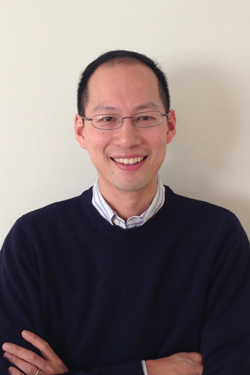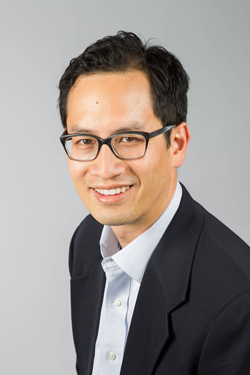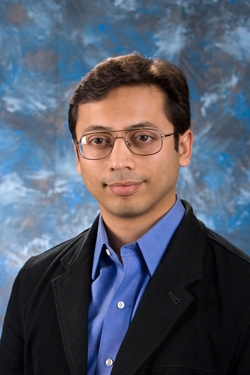NEW YORK, June 30, 2015 – A chemist who has made important discoveries in both the human brain and sustainable energy, a neurosurgeon who has done pioneering work mapping the “blueprint” of how humans speak and hear, and a computer scientist who has changed our understanding of the capacity of wireless networks are the three winners of the 2015 Blavatnik National Awards for Young Scientists.
The Awards, given annually by the Blavatnik Family Foundation and administered by the New York Academy of Sciences, honor the nation’s most exceptional young scientists and engineers, celebrating their extraordinary achievements and recognizing their outstanding promise while providing an unparalleled prize of $250,000 to each National Laureate. The prize is the largest unrestricted cash award given to early career scientists.
This year’s National Laureates all hail from California. They include:
- Christopher J. Chang, PhD, Class of 1942 Chair, Professor of Chemistry and Molecular and Cellular Biology, University of California, Berkeley and Howard Hughes Medical Institute (HHMI) Investigator. Dr. Christopher Chang is honored for his discoveries in chemistry that span both neuroscience and energy science.
- Edward F. Chang, MD, Associate Professor in Residence of Neurological Surgery and Physiology, University of California, San Francisco (UCSF) and Co-Director of the Center for Neural Engineering and Prosthetics, UC Berkeley and UCSF. Dr. Edward Chang is being recognized for his work in establishing the neural code for human language processing.
- Syed Jafar, PhD, Professor of Electrical Engineering and Computer Science, University of California, Irvine. Dr. Jafar is selected for his discoveries in interference alignment in wireless networks, changing the field’s thinking about how these networks should be designed.
“Our 2015 National Laureates have made incredible discoveries early in their careers,” says Len Blavatnik, Founder and Chairman of Access Industries, head of the Blavatnik Family Foundation, and an Academy Board Governor. “On behalf of the Blavatnik Family Foundation, I congratulate the Laureates and the National Finalists and look forward to their future discoveries. This award will help to provide them with the freedom to pursue new ideas and further innovation.”
The three National Laureates were selected from a pool of nominations submitted by 147 of the nation’s leading universities and research institutions, representing 39 states. Each institution was invited to nominate one chemist, one life scientist and one physical scientist or engineer. The names of highly qualified nominees were also submitted by members of the Blavatnik Awards Scientific Advisory Council.
Starting with a pool of 300 nominations of exceptional faculty-rank researchers, the awards jury, composed of some of the world’s most eminent scientists and engineers, conducted a rigorous review. The judges first narrowed down the selection to 32 National Finalists, and then to three National Laureates. The three Laureates and 29 Finalists will be honored at a black-tie ceremony on Monday, September 28, 2015 at the American Museum of Natural History in New York.
“The nominations we received this year were outstanding. The New York Academy of Sciences is confident that these young scientists will have a major future impact on their respective fields, and beyond,” says Dr. Mercedes Gorre, Executive Director of the Blavatnik Awards for Young Scientists. “We congratulate the Laureates and the National Finalists on their achievement.”
About the National Laureates

Christopher Chang, PhD
2015 Blavatnik Laureate in Chemistry
University of California, Berkeley
PhD, Massachusetts Institute of Technology
BS/MS, California Institute of Technology
Working at the frontiers of neuroscience and energy research
Chemistry wasn’t Dr. Christopher Chang’s initial major in college. However, his father was a chemist and he always wanted to know “what things were made out of.” He credits undergraduate mentor Dr. Harry Gray with getting him excited about chemistry and energy science. He became even more interested in chemistry benefiting society through his work with PhD and postdoctoral advisors Drs. Daniel Nocera and Stephen Lippard.
Driven by a strong social conscience, Dr. Chang and his lab work in two frontier areas of research. Dr. Chang’s first scientific goal is to identify and understand the roles of all basic chemical elements that are essential to the brain’s functioning. Using new molecular imaging tools, he visualizes chemical reactions involving metal ions and small molecules that help shape such basic processes as memory, cognition and the processing of sensory information, and may also play a role in aging and neurodegenerative diseases. His second goal is to develop technologies for personalized energy, in which people can make what they need in their own households without reliance on the energy grid, to help minimize waste and affect climate change.
“Winning the Blavatnik Award is humbling and exciting at the same time,” says Dr. Chang. “While awards are given to one or a few people, they represent the support of many others who have enabled good things to happen – including students, mentors, colleagues and family. It’s also great to support science and scientists in a public way, as education and technology have long-term benefits for society.”
“Chris Chang has changed the way bioorganic and bioinorganic chemists think about the role of redox active metals and reactive oxygen species in signaling, pathology and physiology in the brain…an emerging field known as metalloneurochemistry. Dr. Chang has overturned existing paradigms by demonstrating that redox active metals (iron, copper, cobalt, molybdenum) can serve in signaling pathways, and that reactive oxygen species such as hydrogen peroxide can be beneficial (not damaging) in stem cell regeneration in the brain.” – Dr. Scott E. Denmark, Reynold C. Fuson Professor of Chemistry, University of Illinois and a member of the 2015 National Jury.

Edward F. Chang, MD
2015 Blavatnik Laureate in Life Sciences
University of California, San Francisco
MD, University of California, San Francisco
BA, Amherst College
Uncovering the neural mechanisms of language processing
Dr. Edward Chang credits his interest in neuroscience to wonderful teachers during his first year of medical school at UCSF, who “opened [his] eyes to the beauty of the nervous system.” These professors were also eminent scientists, and inspired him to take a few years off from his clinical training to work in a research laboratory. By the time he returned to medical school, it was clear that scientific discovery would be inseparable from his mission as a surgeon treating serious neurological disorders.
Since that time, Dr. Chang’s research, which aims to understand the uniqueness of human language and is conducted largely through monitoring brain activity patterns in awake patients during surgery, has made a major impact in a number of fields. These include: systems neuroscience, linguistics, psychology and biomedical engineering. His lab has established the basic “blueprint” of how the brain allows us to speak and hear – recording responses to nearly every speech sound in the English language. Dr. Chang is now beginning to look at brain activity patterns that underlie anxiety and depression, and developing safer and more effective methodologies to map the brain during surgery.
About receiving the Blavatnik Award, Dr. Chang says: “It is so gratifying to be recognized, especially at a relatively early stage in my career. Getting to this point required so much sacrifice and support from my family. In addition, our research requires such a special collaboration with our patients, who volunteer to participate during their surgeries. Sharing this recognition with them gives the experience that much more meaning to what they have contributed.”
“Dr. Chang has accomplished a hugely impressive and exciting body of work in a very short time - just five years since he established his own lab at UCSF. The work is unique and has already transformed our understanding of that most human of behaviors: language and speech.” - Dr. Carla J. Shatz, Sapp Family Provostial Professor, Professor of Biology and Neurobiology, and David Starr Jordan Director, Stanford Bio-X James H. Clark Center and a member of the 2015 National Jury.

Syed A. Jafar, PhD
2015 Blavatnik Laureate in Physical Sciences & Engineering
University of California, Irvine
PhD, Electrical Engineering, Stanford University
MS, Electrical Engineering, California Institute of Technology
Solving the mysteries of wireless communication
Dr. Syed Jafar became interested in science in high school. “Einstein’s ‘E=mc2’ captured my imagination,” he says. The equation made him wonder about how something so profound can be so simple and beautiful – and it became his lifelong dream to pursue beauty through science. As a graduate student studying information theory at Caltech, he found similar beauty in the formula describing the capacity of an information channel (Shannon’s equation). He realized how much about the capacity of communication networks was still unknown, and that the exploration of this problem would become his life’s work.
Because of the rapid growth of communication networks in the past decade, there is an unprecedented urgency to solving problems in network information theory. The main focus of Dr. Jafar’s research group is to solve as much of the mystery of wireless communication and networks as possible. He has made numerous discoveries in this area, including his groundbreaking discoveries in interference alignment in wireless networks. This research demonstrated that data rates in wireless networks are not limited by the number of communications endpoints (nodes) sharing the radio frequency spectrum – a discovery that changed the thinking of the field about how wireless networks should be designed.
“I am incredibly honored to be recognized on the national stage as one of such an amazing cohort of extremely accomplished finalists, and by such an illustrious jury of the nation’s most distinguished scientists,” says Dr. Jafar. “It is my hope that this recognition will lead to broader exposure and appreciation of both the beauty of information theory and the tremendous impact it has on our lives. It is also a ‘shot in the arm’ for me to continue to take on challenging problems in our research group.”
“Syed Jafar revolutionized our understanding of the capacity limits of wireless networks. He demonstrated the astounding result that each user in a wireless network can access half of the spectrum without interference from other users, regardless of how many users are sharing the spectrum. This is a truly remarkable result that has a tremendous impact on both information theory and the design of wireless networks.” - Dr. Paul Horn, Senior Vice Provost for Research, New York University and a member of the 2015 National Jury.